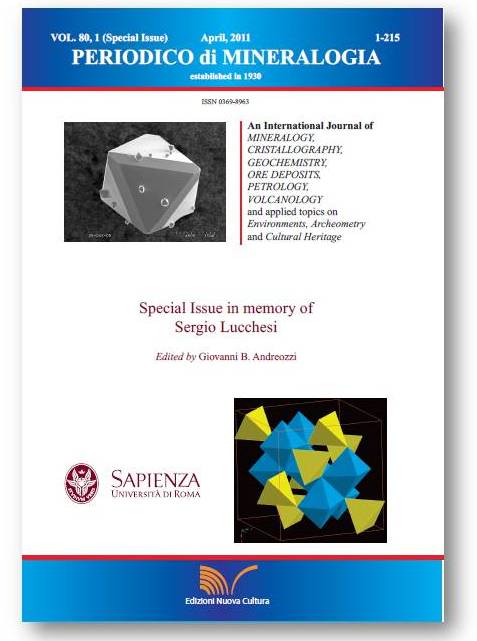Absorption of light by exchange coupled pairs of tetrahedrally coordinated divalent manganese in the helvite-genthelvite solid solution
DOI:
https://doi.org/10.2451/2011PM0008Keywords:
helvite, genthelvite, electronic spectroscopy, electron microprobe analysesAbstract
Periodico di Mineralogia (2011), 80, 1 (Special Issue), 105-111 - DOI: 10.2451/2011PM0008
Special Issue in memory of Sergio Lucchesi
Absorption of light by exchange coupled pairs of tetrahedrally coordinated divalent manganese in the helvite-genthelvite solid solution
Ulf Hålenius
Department of Mineralogy, Swedish Museum of Natural History, Stockholm, Sweden
ulf.halenius@nrm.se
Abstract
Intensified colours in the helvite-genthelvite solid solution series are demonstrated by means of single crystal optical absorption and electron microprobe techniques to be due to absorption of light by exchange coupled IVMn2+-IVMn2+ pairs. The absorption bands caused by the pair transitions occur at energies, 21100, 22600, 23800, 26800 and 28400 cm-1, that are comparable to those recorded for spin-forbidden single ion transitions in IVMn2+, but the absorption coefficients of the bands are proportional to the square of the Mn-contents of the samples instead of simply showing a Lambert-Beer relationship to the Mn-content. The helvite structure, comprising four corner sharing MnO3S tetrahedra with a common sulphur anion apex, represents a favourable situation for formation of exchange coupled 3d-cation pairs. However, several common Mn-rich minerals, as, e.g., rhodonite, have comparably favourable structures that contain corner, edge or face sharing 3d-cation centred polyhedra. Consequently, may Mn2+-Mn2+ pair absorption be a frequent cause for colour intensification in minerals.
Key words: helvite; genthelvite; electronic spectroscopy; electron microprobe analyses.


